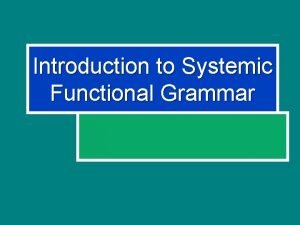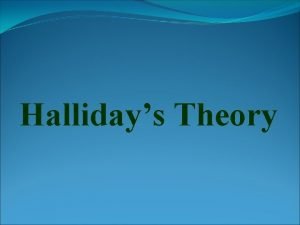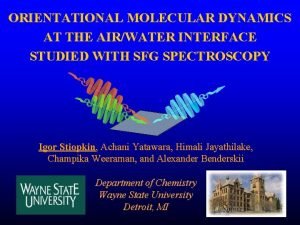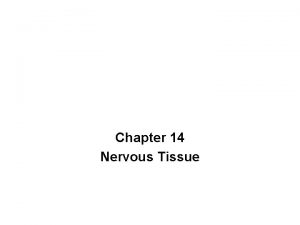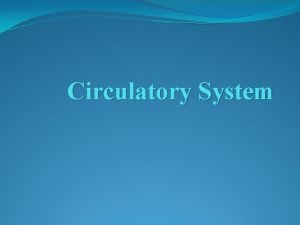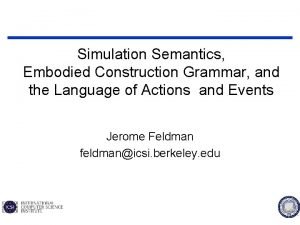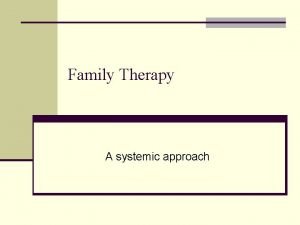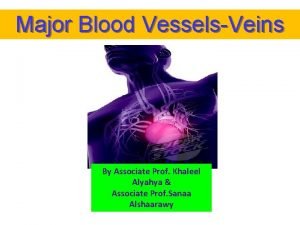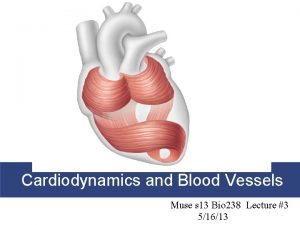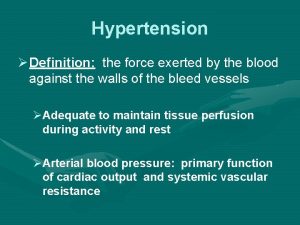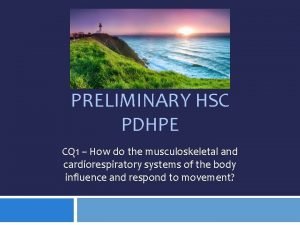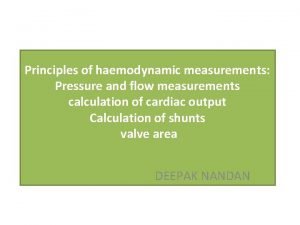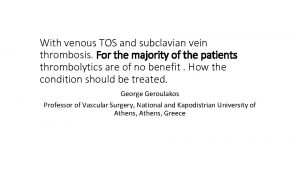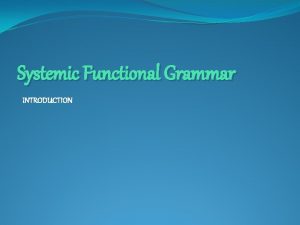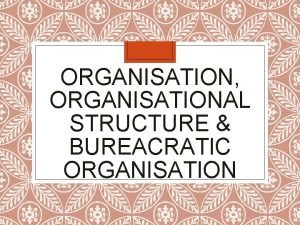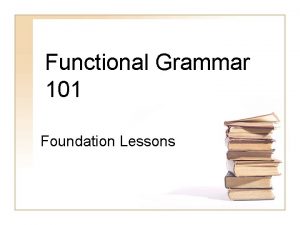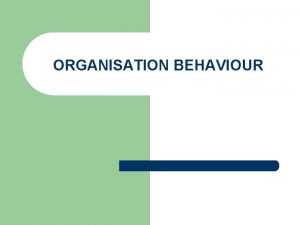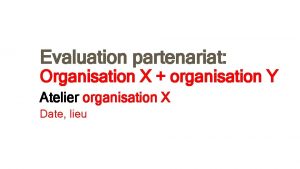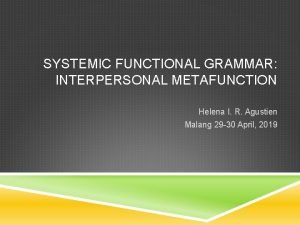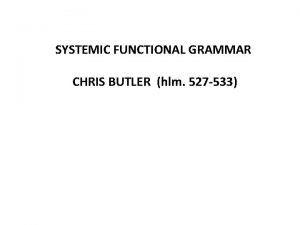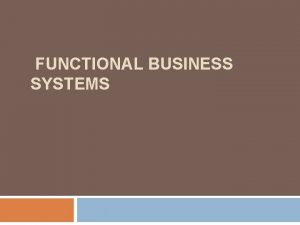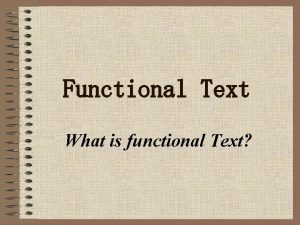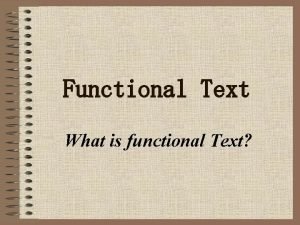Systemic Functional Grammar SFG Grammar the organisation of



















- Slides: 19

Systemic Functional Grammar SFG • Grammar : the organisation of language Chomsky : grammar hard - wired into brain ; v. S Halliday : Ontogeny recapitulates phylogeny ; language acquisition is an interplay between nature & nurture ; Learning a language is learning how to mean ( Halliday , 1975 ) ; a child learns structures that reflect the functions required to serve his / her life. Systemic functional grammar or systemic grammar is a grammar model developed by Michael Halliday (1985) with his Introduction to Functional Grammar based on the model of language as social semiotic.

Functional Grammar Functional grammar describes the relationship between grammatical structures and meanings it focuses on language In Functional Grammar, the essential word group are : 1. Noun Group 2. Adjective Group 3. Adverb Group 4. Verb Group 5. prepositional Phrase

BASIC CONCEPTS IN FUNCTIONAL ANALYSIS • Rank - Rank refers to the different levels of organisation in the description of grammar. -We could talk about our analysis at word level or we could talk about it at sentence level. • Units -Units are the word groups that can be strung together to give meaning. • Clauses -A clausal structure contains a verb form. It may be a complete sentence or it may be a group of words that serve as a modifier.

• Examples : • He goes to the movie. (one clause) • Ahmed bought a pen and Sam bought a book. (two clause)

● ● ● A clause may be a finite clause or a nonfinite clause A finite clause contains a finite verb such as - He goes to the antique shop in Malacca. - She went to Port Dickson with her friends. A nonfinite clause may contain a verb form which is not affected by tense agreement or number as in : - Having transport problems , Kong Beng decided to stay in the hostel at Sekolah Sri Kota.

Noun Groups • The noun group is another grammatical feature that needs explication as it is a group that occupies an essential slot in most of our utterances. • He goes to the gym. • Structure of a Noun Group • In understanding how nouns function, we could examine the constituents in the group. The group may be just one word or several words. The focus in the noun group is the head and a premodifier may precede while a postmodifier may follow the head. • Example • Premodifier • The headmaster postmodifier of sri Gombak

VERB GROUPS • A verb group is an expanded verb. An example is the following sentence : • She should have written the letter. • Structure of a Verb Group The head of the verb group is written. It represents the experiential meaning of the process. Such verbs are known as lexical verbs. The elements that precede the head are auxiliary verbs or auxiliaries. They are sometimes regarded as premodifiers • In a verb group, four types of auxiliaries can precede a head verb. The head verb is the lexical verb. • He would have been seen by the guide. • He is going to school. • She has been promoted. • modal auxiliaries will , would , may • perfect auxiliaries have , has , had • continuous / progressive auxiliaries is , am , are • passive auxiliaries is , am , are

• Action processes • In functional grammar, the term for the configurations of participants associated with different processes is known as transitivity. Action processes Participant (Goal) circumstance Participant (Actor) Action


• What, than, are the functions of language? • • Halliday’s 3 metafunctions : Interpersonal metafunction Textual metafunction Experiential metafunction

1 -Interpersonal metafunction The Clause as Exchange


The subject carries the responsibility for the validity of the clause. The finite carries the validity of the proposition. Together , the subject and the finite ( the mood ) represent the point of view of the speaker while the residue carries the actual content. Manipulating the mood enables us to - indicate polarity ( negative or positive ) , - indicate time - indicate modality - make interrogatives and imperatives make question tags

In fact, the finite is the core bandied about in exchanges. A- you didn”t teach the students any real grammar. B- Yes, I did ! A- No, you didn’t ! B- Did ! A- Didn’t !

2 -Textual metafunction Ø The clause as a message

3 -Experiential metafunction Ø The Clause as Representation Ø Who does what to whom ? Ø The clause represents the content of our experiences Ø Grammatical system of transitivity Ø Different functional labels for Participants ( realized by nominal groups ) Processes ( realized by verbal groups ) Circumstances ( realized by prepositional phrases or adverbials)



Thank you for your attention By Farah Raad Al-Mawla
 Mood block grammar
Mood block grammar Sfg grammar
Sfg grammar Sfl
Sfl Sfg sfgsfg
Sfg sfgsfg Functional organisation of nervous system
Functional organisation of nervous system Cardiac plexus
Cardiac plexus Functional and non functional
Functional and non functional Space maintainers classification
Space maintainers classification Non functional plasma enzyme
Non functional plasma enzyme Enzymes
Enzymes Embodied construction grammar
Embodied construction grammar Systemic family therapy techniques
Systemic family therapy techniques Venae comitantes
Venae comitantes Mycoses
Mycoses Overview of the major systemic arteries
Overview of the major systemic arteries Hypertension medical definition
Hypertension medical definition Systemic circuit
Systemic circuit How to calculate systemic vascular resistance
How to calculate systemic vascular resistance Systemic review
Systemic review Hepatic blood flow
Hepatic blood flow
